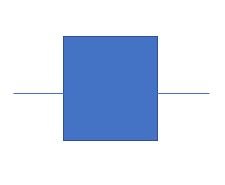Closure

Proximity

Similarity

Continuity

Rule #1--We try to organize (group) things:
The Gestalt Laws of Grouping (link to a video that summarizes the main laws)
| Law | Definition | Example |
|---|---|---|
Closure |
our tendency to "close" or "fill-in" gaps to see a whole form. | Below, you see a square rather than four
separate lines. (Singers take advantage of this by often
leaving out those hard to sing consonants. For example, in
this hit 1970's song "Hey,
Mr. Postman", the great Karen Carpenter does not sing
the "r" in the words "letter" and "better." |
Proximity |
our tendency to group together things that are close together. | Below, you see two groups of four crosses rather
than four groups of two crosses.
|
Similarity |
our tendency to group similar items together. | Below, you group the same colored crosses
together, so you see a blue column and a red column rather
than seeing 4 rows.
|
Continuity |
our tendency to see lines as continuing, without breaks. | Below, you see one (continuous) line going through the
square, rather than seeing two unconnected lines on each
side of the square.
|
1. Brightness/color constancy: Objects seem the same color and brightness regardless of whether it is a bright or cloudy day.
2. Size constancy: Your friends don't look bigger as they come closer to you--even though their images on your eyes do get bigger.
3. Shape constancy: Even though the image on your eye changes as you look at a door from different angles, you still see the door's shape as rectangular.
Rule #3--We divide the world into two things: figure (foreground, what we focus on) and ground (background).
Rule #4--Attention is selective--only 1 thing is figure (focus) at a time (so multi-tasking doesn't work). Examples:
Rule #5--Stimuli that are intense and that change are more likely to be figure (the focus of our attention).
Taking advantage of this rule to get and keep attention
Rule #6--Ground (the background) affects perception of figure (e.g., this is not very visible against a yellow background but this is visible against a darker background).